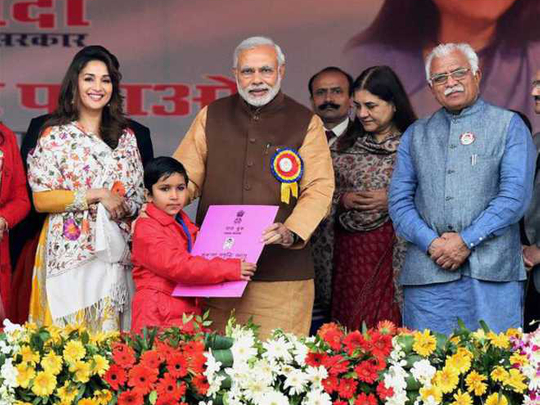
The World Economic Forum’s latest report — the Global Gender Gap Index 2017 — highlights, yet again, India’s poor showing on the gender equity front. The country ranks 108 out of 144 countries (behind its neighbours China and Bangladesh) taking a tumble of 21 places from last year’s 87 to its lowest ranking since the index was published in 2006.
The index measures the “relative gaps between women and men” across countries in four key areas — health, education, economics and politics. According to the report, India’s poor performance is largely attributable to two areas: Health and survival and economic participation and opportunities for women. In the former category, India comes in at 141, among the bottom four. The reason? A skewed sex ratio at birth with most Indians still hankering for sons over daughters. Apparently, Prime Minister Narendra Modi’s flagship programme ‘Beti bachao, beti padhao’ (save daughters; educate them) aimed at gender sensitisation has had limited resonance among Indians.
Another disconcerting fact highlighted by the study is India’s “widening of gender gaps in political empowerment as well as in health-life expectancy and basic literacy”. Even in the category of economic participation and opportunities for women, India’s rank has plummeted to 139 from 136 last year. The report ascribes this drop to an adverse work climate where women get paid only 60 per cent of what their male counterparts earn for similar work. Worse, women’s share of daily unpaid work (household chores etc) is a whopping 65 per cent while for men it is only 11 per cent. Hardly surprising then that despite gains in education, Indian women’s work participation rate in the formal economy stands at a lowly 27 per cent.
Unsurprisingly, as the report states, only 13 per cent of senior officials, managers and legislators across all sectors are women. Instead, Indian women constitute the bulk of what’s called the country’s exponentially growing ‘informal’ sector, defined by the absence of decent working conditions as specified by the International Labour Organisation, lax labour laws and insufficient or insecure wages.
Given the asymmetry between opportunities for men and women, experts reckon it will take centuries for Indian women to catch up with their male counterparts. Time perhaps for policymakers to investigate why the benefits of two decades of economic progress are not percolating down to half its population?
Economists concur that for a progressive society, greater participation of women in the workforce — and more women in leadership roles — is vital. The example of Bangladesh, at the 47th spot in the index, is illustrative. Twenty per cent of the country’s legislators in parliament are women while 45 per cent are in the workforce. This has helped the tiny South Asian nation’s women power ahead in the economic and political sphere. In contrast, only 12 per cent of legislators in India are women.
According to an International Monetary Fund Report titled ‘Women Workers in India: Why So Few Among So Many?’, India’s female labour force participation (FLFP) rate is among the lowest within emerging markets and peer countries. India’s FLFP — or the share of employed women or those seeking work from the working-age female population — is 33 per cent, almost half of the East Asian average of 63 per cent and well below the global average of around 50 per cent.
This skew, experts say, reflects illiberal economic policies as well as complex social dynamics which prevent women in the world’s largest democracy from realising their full potential. Despite sporadic efforts to build gender diversity at the workplace, corporate India still has less than five per cent of women at top management and board levels. Only 50 per cent of the women who graduate from business schools enter the workforce, says a survey entitled ‘Women Managers In India — Challenges & Opportunities’. The persistence of an invisible glass ceiling at the workplace and the prevalence of stereotyped gender roles contribute most to lower representation of women in higher-level positions, say experts.
In fact, so glaring has been the absence of women on corporate boards that market regulator Securities and Exchange Board of India had to issue a stringent directive making their inclusion mandatory. The New Companies Act 2013 was enacted with a similar objective. There’s no gainsaying the fact that a gender-balanced and inclusive workforce is a social and economic imperative. In 2003, Norway introduced legislation that required organisations to raise the proportion of women on their boards to 40 per cent. Today, the Scandinavian country is recognised as a leader in representation of women in the corporate sector with many other countries emulating its example.
Be that as it may, forced legislation is not the ideal way to bring about change, empower women or promote gender equity. It should happen organically. For any progressive society, effective social and economic policies aimed at providing a level playing field to women are vital. Without them, true progress will continue to remain elusive.
Neeta Lal is a New Delhi-based editor & senior journalist.










